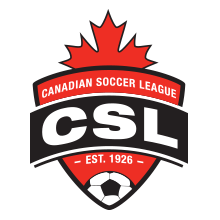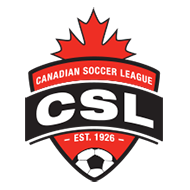….. when he scored the tying goal for Newcastle United in the 2-2 tie with league-leading Manchester United before 52,000 fans in an English Premier League game on New Year’s Day, 2007.
The elder Edgar, himself a former professional goalkeeper in the English league and coach of the CSL’s London City in 2009, was attempting to justify sending young David overseas for academy training with Newcastle. David played for Canada’s under-17s and just three months later in 2003 was selected for the Canadian under-20 squad. He was the Canadian youth player of the year in 2006.
But Eddie Edgar ruled out player development in Canada and his harsh comments were widely carried in the Canadian media and caused a mild stir in Canadian soccer circles.
The former goalkeeper based his opinion on the belief that the most effective player development is competitive-based, where you learn the game, develop skills and acquire a mental toughness while playing in a serious competitive environment. Youth players connected to professional clubs is considered the best combination to reach full potential, a theory widely held throughout Europe where the top clubs are sufficiently advanced to consider the developed player a revenue generating resource.
But Canada and the United States are catching up. As the professional soccer structure increases and becomes stronger, more clubs are taking on that extra dimension, adding player development of younger, more promising players and there is mounting evidence it’s paying off. Statistics coming out of the recent Major League Soccer SuperDraft reveals that 37 of the 54 players drafted played in an academy-style environment in the USL – the very competitive U.S.-based league with various levels of play.
In Canada, the three top clubs, Toronto FC, Montreal Impact and the Vancouver Whitecaps have collaborated on the subject of player development, while the CSL and most of its clubs have realized they have ignored serious player development for too long, deciding recently to adopt a program that will run parallel to the league’s tough professional competition. This is all very much a change of attitude following many years of docile acceptance that Canada’s professional soccer structure simply lags behind the country’s soccer ambitions in the world and, therefore, player development is an endeavor to be taken up sometime in the future. In the meantime, player development has been left mostly in the care of soccer’s governance – the provincial associations, their districts and the CSA.
Fortunately, a few soccer academies and the larger amateur clubs have helped to fill the void somewhat and in doing so have helped to improve the long-standing Canadian dilemma, the disproportion of Canada’s one million players and the insufficient qualified coaching and other technical expertise available across the country.
Canada does have a number of highly qualified technical experts, of course, but it’s a quantitative issue – there just aren’t enough. Tony Taylor, with the Burlington Soccer Club in Ontario, has been one of the more sought-after player development experts in Canada who for many years has assisted a number of overseas clubs design their player development programs. The former Canadian under-17 and under-20 national team coach – he won the CONCACAF under-20 competition and took these teams to three world youth finals – wrote a thesis-like paper in 1985 in which he puts the player base and competition high on the list of the development program components. “Soccer, by its very nature, is a competitive sport,” he said recently, suggesting that the element of a competitive environment is important to the young player. “There were a lot of Peschisolidos that emerged from the CSL days of the late 80s – they had good player development together with strong competition,” he said.
Interestingly Taylor, who has spent most of his years since arriving in Canada from the U.K. in 1980 working with young players, was in the 60s one of the youngest players in Britain at age 16 to sign professional forms. He later became a high profile player for London-based Crystal Palace, one of the top clubs of the day, making almost 200 appearances.
An increasing number of young players with CSL clubs are being identified for the younger Canadian national teams and that is expected to increase as the CSL’s player development program takes hold. In recent years several former CSL players have shown prominence domestically and overseas with 27 year-old Atiba Hutchinson being the most outstanding recent example. Hutchinson kicked off his professional soccer career with York Region Shooters in 2002, then played four games with the Toronto Lynx before signing for Osters IF of Sweden. In December, he was named the Canadian Soccer Association’s male player of the year and that followed his selection as the Danish league player of the year 2009-10 to reflect his contribution to FC Copenhagen winning the league title. Today, Hutchinson is with PSV Eindhoven in the Netherlands.
London City was one of the earlier CSL clubs to give young players a chance at making a professional team and soon realized the experience accelerated a young player’s development and a number made their way to Europe as a result. More CSL teams have since followed suit, then came the decision in 2010 to formalize player development as a year-round program. North York Astros and York Region Shooters have been laying the groundwork for an attractive, comprehensive program for more than two years now, while Brampton United, Serbian White Eagles and Portugal FC are stepping up player development to provide young players with the benefits of being in a competitive atmosphere. A CSL team’s senior players will be involved, many with strong European experience, such as Sasa Viciknez of Serbian White Eagles who played in the European Champions League.
The CSL’s player development program gets underway the week of January 24 with a number of indoor practice games at the Major League Sportsplex in Scarborough and will continue into a summer program beginning late spring.
Games scheduled are:
York.Region Shooters vs Serbia White Eagles (Res.)
York Region Shooters vs Brampton United (Res.)
Brampton United. vs North York Astros (Res.)
Portugal F.C. vs.North York Astros (Senior)
York Region Shooters vs Brampton United (Senior)
Serbia White Eagles vs North York Astros (Senior)
Players wishing to enter the CSL Player Development Program should contact:
Brampton United – Michael Di Matteo at 416 891-5621
North York Astros – Bruno Ierullo at 416 240-1718
Portugal FC – Frank Cardona at 647 637-6353
Serbian White Eagles – Dragan Bakoc at 416 252-4762
York Region Shooters – Tony or Cyndy De Thomasis at 905 731-9800,
Stan Adamson is not unfamiliar with academy training in a competitive environment, having played for two seasons with the Sunderland FC, England academy team as a teenager. In Canada, he gave a helping hand with media work for the Toronto Metros during their1970 launch into the North American Soccer League, has since been the media man for the Toronto Lynx when the team was a member of the USL’s Division 1 and today he is on staff at the CSL where he mixes media work with administration. He’s published two newspapers, Toronto Soccer and in the 90s the nationally distributed The Soccer News. He’s served on the board of the Canadian Soccer Association as chair of the professional soccer committee, has served on Council at the Ontario Soccer Association (now the board of directors) and is a Life Member of the Toronto Soccer Association.

